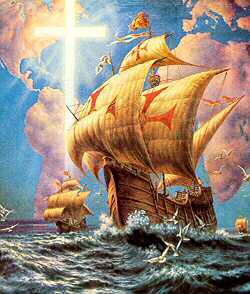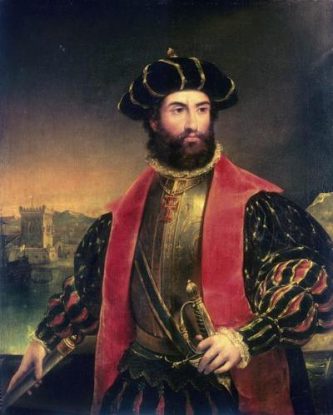GUEST POST OVERVIEW: Where would I be right now if some of the world’s most famous explorers had not gotten into a boat hundreds of years ago? Certainly not backpacking my way across Thailand, as I am doing right now. In this week’s guest post, Aleix gives us a fascinating history lesson about Portuguese explorers.
“Portugal is today far from what it was 600 years ago. Back then, the imperial power that it had along with its great adventurers and explorers was unparalleled, and many of them set off to the unknown out in the sea without knowing if they would come back. However, they did.

A visit to Portugal these days is quite simply one of the most interesting and beautiful visits that one can think of. This country is hugely underrated as a tourist destination, but play that to your advantage. Not only does it have some excellent beaches of soft sand in the south of the country, in the Algarve, but also some Atlantic beaches where to practice extreme sports.
The city of Lisbon is a city that has it all, old and new, with some beautiful old areas such as the Alfama and the Barrio Alto, and some new ones in the city centre. Portuguese food is among the best in Europe, but talking about it now would lead to the impotence of not being able to be sitting right now in the terrace of one of the apartments in Lisbon, so let’s leave that for another day.
:::::::::::::::::::::::::::::::::::::::::::::::::::::::
Portuguese Explorers
Six centuries ago, Portugal was one of the world’s most powerful countries. It’s privileged position on the edge of the Atlantic Ocean meant that it was in a prime spot for navigators, adventurers and explorers. It’s around 600 years ago that the Portuguese began to discover their Atlantic colonies, such as Madeira and the Azores, from which they went to their African ones (Cape Verde and São Tomé e Principe), crossing the Equator and being guided by new constellations.

However, going south wasn’t the only way for the Portuguese discoverers, as they navigated the Indian Ocean for the first time, after Bartolomeu Dias, one of the great explorers, went around Africa and crossed the Cape of Good Hope, and entered this unknown ocean. The cape was called like that because it represented a new route to the east.
(ship image courtesy of Adventure of the American Mind)
They also went north, to what today is Greenland, which then they called Labrador, which means farmer in Portuguese, by the hand of João Fernandes. In 1498, legendary adventurer Vasco da Gama went around Africa, just like Bartolomeu Dias had done, and went all the way to India, thus inaugurating this route.
A few years later, Pedro Álvares Cabral discovered Brazil on his way to India but going in the opposite direction in 1500, just a few years after Christopher Columbus discovered America, although it is believed that in his first voyage he only went to Cuba and the Dominican Republic, not to mainland South America, which he didn’t do until his third voyage in 1498.
The Portuguese didn’t stop here and they carried on discovering lands in the Far East and Southeast Asia, such as Thailand, Siam, Timor and the African islands of Madagascar and Mauritius.

However, they weren’t content with having an Eastern route and they searched for a Western one, and the chosen man was Ferdinand Magellan, Fernão de Magalhães in Portuguese.
Magalhães ventured out West in 1519 and was the first man to sail from the Atlantic Ocean to the Pacific Ocean, which he named as such because it was so calm. His expedition was the first one to sail around the world in circumnavigation although he himself was killed in a battle against natives from the Philippines in 1521.
Today, all of these discoverers are homaged with the Padrão dos Descobrimentos, the Monument to Discoveries, a beautiful sculpture that depicts all of these explorers and other outstanding people of that time that pays tribute to Portugal’s golden era. The monument is right in front of the Jerónimos Monastery, and must not be missed during your stay in Lisbon.
Rent apartments in Lisbon and discover all of Portugal’s glorious and incredibly interesting past, where the fearless explorers discovered most of the world that we know today.”
Lisbon photography by Jaime Silva
About the Author: Aleix Gwilliam is a 24 year old from Barcelona who looks English but thinks like a Catalan. He enjoys travelling, especially on old Czech trains, and trying to start conversations in Hungarian with people at Pecs station, even though his Hungarian is as good as his Bulgarian, in other words, not very good. He’s a trier.
EXPLORE SOMEWHERE NEW
Nothing found.
BUY A PRINT
All photos on this site are available as limited edition fine art photographic prints. Please get in touch for sizes and rates.

